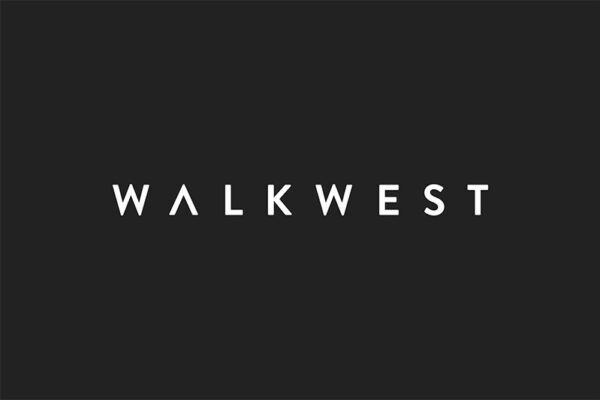By John Murphy, Contributor, Pitstop Analytics
The time you spend on internal meetings has been rising steadily. So, you won’t be surprised that executives generally report spending an average of 70% of their time on internal collaboration. However, what will surprise you is data showing how much of this time is actually wasted.
What % of internal collaboration actually adds value?
Choosing How You Spend Your Time Imagine it is mid-morning on Thursday. You have 3 choices:
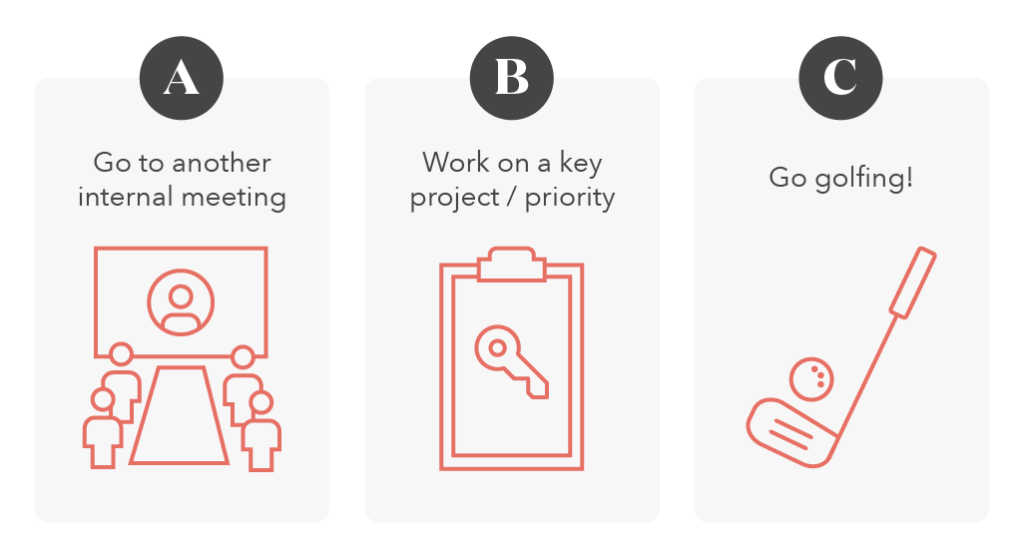
You need to do (B), you would like to do (C), but chances are you are already on your way to yet another internal meeting (A). But think again. How much is another internal meeting going to actually contribute to the success of your week. Well, chances are very little. To use more technical language – the payback (what we call Return on Collaboration) is likely to be poor.
How Much Time Is Spent on Collaboration? The data tells us that executives are spending an average of 70% of their time on internal collaboration. That includes time spent on emails, calls and meetings with colleagues on their team, as well as on other teams, departments and functions. Apply this data to a 5- day working week and it means that from Tuesday lunchtime onward is spent on internal collaboration. Most of the typical working week is now spent on internal collaboration (i.e. 3.6 days). It accounts for all of Tuesday afternoon, together with the full day on Wednesday, Thursday and Friday too! That is a lot of collaboration, but how much of this is effective or worthwhile?
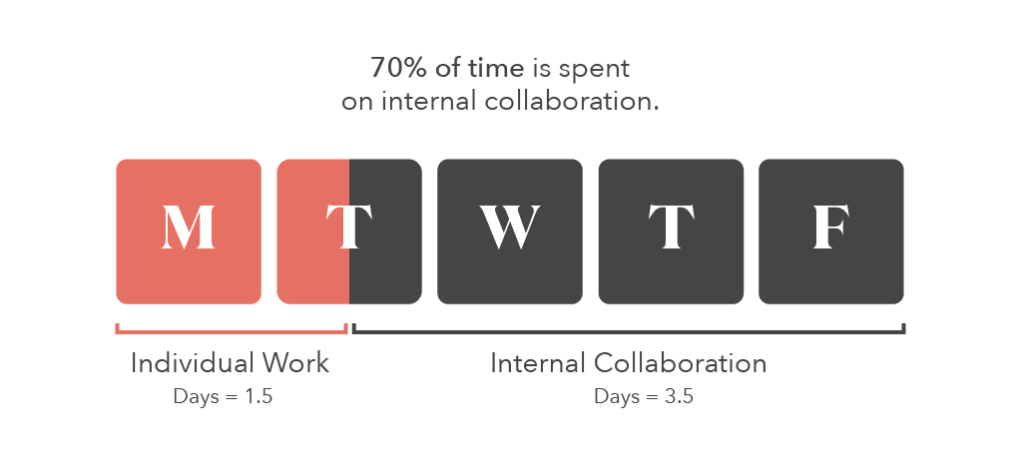
How Much Collaboration Is Effective? The data tells us that just under half of all collaboration (i.e. 47%) adds real value, the rest does not. Apply this data to the typical work week and the following picture emerges: The Typical Week: An Analysis
- Individual Work Days – 1.5 days
- Good Collaboration Days – 1.7 days
- Poor Collaboration Days – 1.9 days
Half of all collaboration adds real value, the rest does not.
Of the time spent collaborating, 47% adds value. In other words, it helps people to get their work done, solve important problems, or otherwise make progress. This ‘good’ collaboration accounts for 1.7 days each week, or Tuesday afternoon and all of Wednesday. But it ends at 10 am on Thursday – from there on the typical week is spent on collaboration that adds little or no value. Imagine finishing work on Thursday at 10 a.m. every week. Why not? The data suggests the rest of your week is spent on internal collaboration that adds little or no value. This brings us right back to where we started – the decision at the beginning of this article – to go golfing or to another meeting.
How Much Time is Wasted on Poor Collaboration? Poor collaboration exists throughout our work week accounting for as much as 1.9 days each week or 37% of your work time that generates little or no value. Here is the paradox: Organizations spend big money hiring the best talent only to put them working in environments where so much of their time will be wasted! And of course, it is not just a matter of wasted time. Perhaps even more finite than time is the energy that people can bring to their work. To spend almost 37% of your week on an activity that does not deliver a return is frustrating, especially when today’s workload means there are simply not enough hours in the day. Poor collaboration doesn’t just steal time, it also drains energy, as well as engagement, creativity and focus.
What is the Cost of Poor Collaboration? For those readers who say ‘show me the money’ let’s bring the 37% figure to life, by calculating the cost of poor collaboration as the total time spent by a team of 10 people on non-value adding internal collaboration. It is a stark message, revealing that poor collaboration is the equivalent of almost 4 team members working full-time. Poor collaboration could be costing your team as much as 142 hours per week. That is the equivalent to losing 3.7 full-time person(s)
Poor collaboration doesn’t just steal time, it also drains energy.
You could take out your calculator and put a number on the salary and related costs involved. That would make the picture even more compelling, perhaps even scary. Less easy to calculate, but likely to be significantly greater than the cost of salaries, is the opportunity cost involved. But imagine the projects, strategies and innovations that could have been pursued if people had up to 37% more time and energy. Imagine what could be achieved if your people had 35% more time and energy:
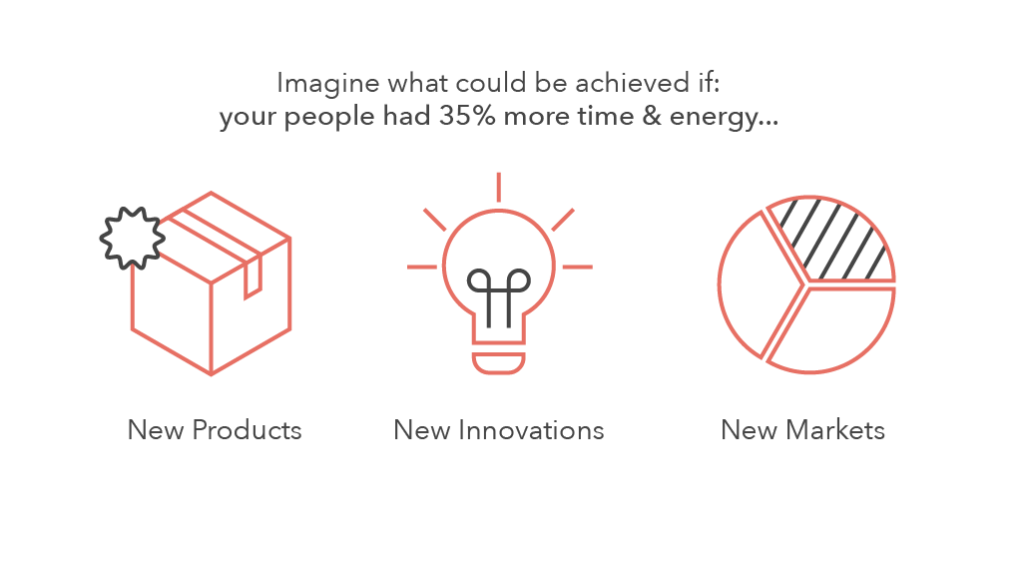
Imagine the projects, strategies & innovations that could have been pursued.
Every Thursday at 10 am you could be packing your golf bag, or alternatively launching into that strategic project that you want to drive forward. Although golfing probably won’t change the future of your organization or its industry, tackling that strategic project you can’t see to find time for, could. The opportunity cost is that instead you go to another internal meeting or conference call that delivers little, or no value.
What is the Potential Return on Collaboration? Let’s end this article on a positive note – the business case for more effective collaboration. To do this we will switch from calculating costs to estimating benefits, expressing the lost time as a potential gain to the team and its members. Looked at in terms of potential benefits, improved collaboration would be the equivalent of:
- Gifting each team member 14 hours each week – time that they could spend on their most important projects and priorities, or simply getting on top of their to-do lists.
- Adding 4 new people to the team with little if any additional cost – no additional salaries, hiring costs, etc.
Then there are equally important, but more difficult to quantify benefits. For example, reduced stress and frustration on the one hand and increased energy and engagement on the other. These are shown here:
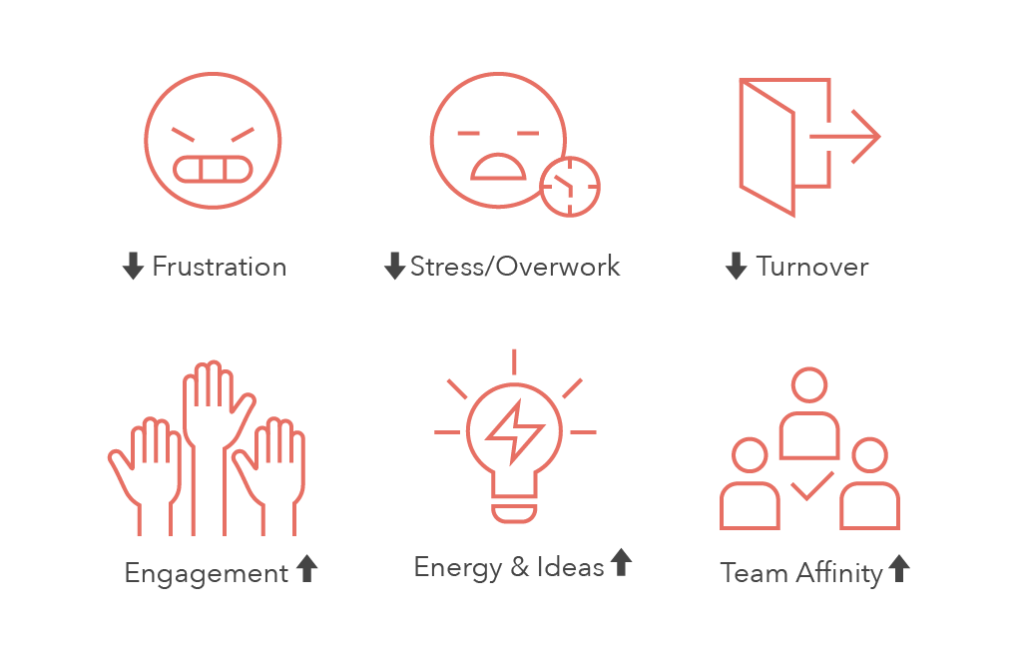
Although hidden, these factors are essential in the battle to acquire and retain talent.
A Call to Action If you are frustrated by the amount of time you spend on internal meetings, are compelled by the numbers (i.e. the cost or payback) or simply want to go golfing, focus attention on your team’s Return on Collaboration. The future will likely require more collaboration, rather than less. However, with something that is so important and takes up so much of our time, it is vital that we can maximize its effectiveness. That is why Return on Collaboration matters.
Take back up to 10 hours a week lost in poor internal collaboration.
Walk West and John Murphy International have partnered to help you improve internal collaboration and deliver team performance improvement. We provide team analytics and organizational productivity workshops to create alignment and focus among members of your leadership and your organization as a whole. Contact our team to learn more
About John Murphy: John Murphy is an executive coach who works with business owners, senior executives and management teams to help them reach their potential. He has worked with clients such as Pfizer, BT and Airbus to deliver significant impact often achieving performance gains of between 7 – 25% over a 180 Day Cycle.
